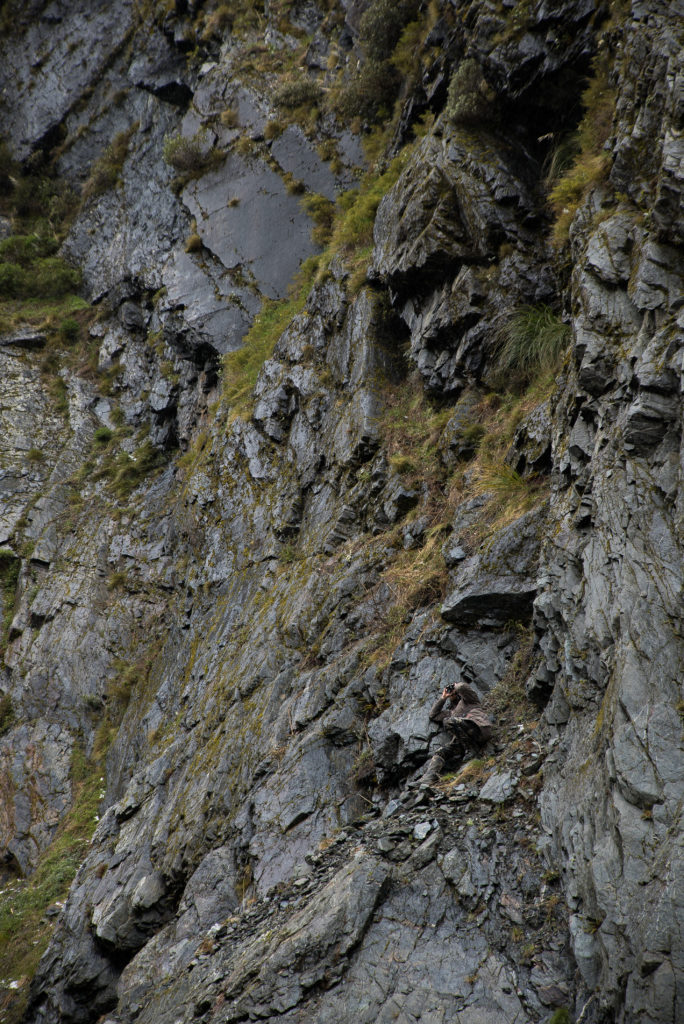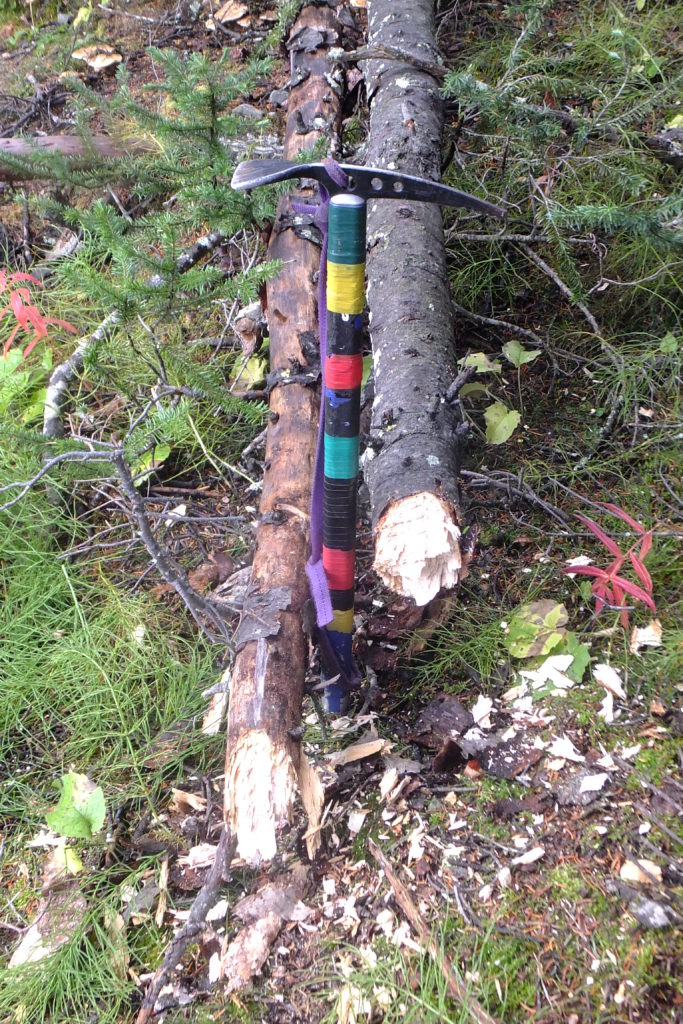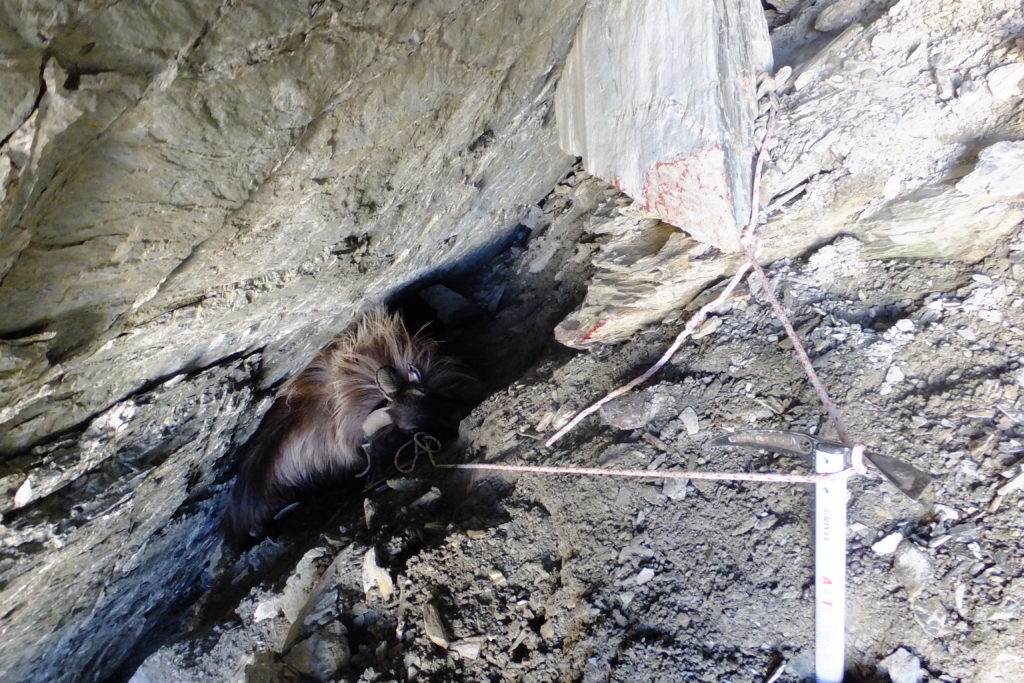Trekking poles have swooped in, taking over the mountain hunting scene in North America. Trekking poles are a great tool when used in the right terrain and can save your knees from aches as well as your body from small falls. But there is a tool that far exceeds the usefulness of the trekking/walking pole while in the mountains: the climbing or ice axe.
 The Author In Ice Axe Worthy Terrain
The Author In Ice Axe Worthy Terrain
Ice axes are often seen as a tool for ice climbers. This is true a lot of the time, but a good quality walking axe has a huge variety of uses, and this versatility ensures I carry one every day I head into the hills.
I got my first real introduction to axes when I started as a glacier guide on Fox Glacier on the West Coast of NZ. We used custom-made axes to smash a path and build steps and staircases so clients could easily access the glacier and its features. These are handmade, three-kilogram, ice-smashing beasts that take some time, skill, and strength to master (they do go through boots quite easily — and feet). Watching a good guide carve a stair case in a matter of minutes is an amazing sight and true workout for the guide. I got used to carrying an axe about and soon found myself wielding a basic 75-cm walking axe wherever I went.
The more days I spent carrying my axe, the more uses I found for it. An axe makes a very solid walking stick and cannot be bent or broken easily like a trekking pole can. I hunt some rather questionable terrain when I am on my own, and an axe adds a huge safety margin to the terrain I can access. Not only does it give me a chance to self-arrest should I fall, but I can create foot and hand-holds in snow and ice, soft rock, and dirt, often the most tricky terrain to move in. How many times have you wished there was another spot for your hands or feet?
There is a large assortment of axes on the market and they are not all created equal. I spend a fair amount of time using them for things they are not designed for, and have tested their construction beyond what is considered “normal” use. If you are looking at buying an axe, look for one around 70-100 cm long. The longer ones are hard to find but worth it if you are tall. I’m 5’10” and find my 75-cm axe just a little short, but I’ve gotten used to it.

Also, stay away from alloy heads! Alloy heads may be lighter, but they are designed for clean snow and ice only and will soon fail; I have seen two of the extendable ice axe/trekking poles with heads snapped off. Get a proper steel head and it will last and take all kinds of abuse. Most axes these days do have alloy handles, and these seem to hold up well. I have mine wrapped in tape to try and reduce noise/glare while hunting. A small leash is a great addition to an axe and makes it a little easier to hold onto.
Step cutting is a skill and can only be learned the hard way: by actually doing it. When carrying your axe, make sure the pointed bit is facing backwards (as in towards your feet) in your hand, that way when/if you slip, you can easily self-arrest; if you don’t know what that means, look it up!
As an important side note, it’s essential to combine the right tools with the right techniques. The best tool will do nothing to save you if not combined with the appropriate basic field skills, and a BIG mistake I often observe with clients is how they sidehill. When side-hilling, people tend to keep their weight on the downhill side with a pole/stick bracing against the pull of gravity. ALWAYS keep your weight on the uphill side; you want to be as close to the mountain as possible. If you fall with your weight uphill, you will gently sit down; if you fall with weight on the downhill side you are most likely to go head-over-heels.

The uses for an axe are almost endless. Here are a few of the most popular uses (and abuses) my axe sees:
- As a walking stick for climbing places I shouldn’t*.
- Cutting steps in ice/snow/rock/dirt.
- Levelling a campsite.
- Digging a toilet hole.
- Cutting small bushes for trails/firewood.
- Snow/ground anchor for rope/tents/tarps.
- Propping up animals for photos.
- Shooting stick…the list could go on and on!
An axe is an easy-to-use tool that costs little, lasts long, and could save your life. They are well worth thinking about if you spend as much time as I do in the rough country. Enjoy yourself in the mountains, and most of all, be safe and have fun!
*Make your own judgements and only push yourself and your gear as far as you feel safe. Your safety is your responsibility and only yours.
About the Author:
Joseph Peter is a New Zealand based Guide-Outfitter and owner of Hard Yards Hunting NZ, one of New Zealand’s only free-range, wilderness hunting focused outfitting operations. With extensive experience chasing Himalayan Tahr, Chamois and Red Stags throughout New Zealand Joseph is a wealth of knowledge on the topics of alpine hunting, alpine travel and mountain safety.

